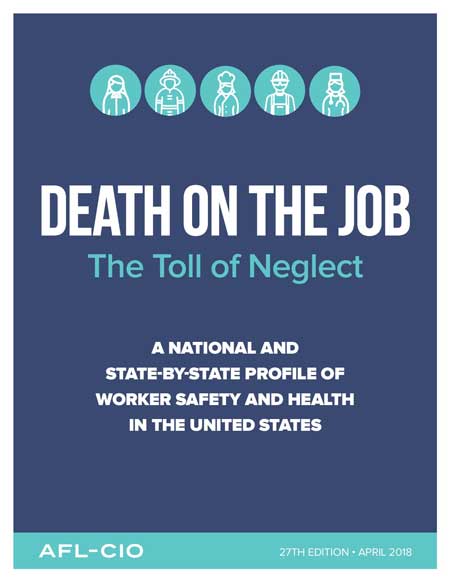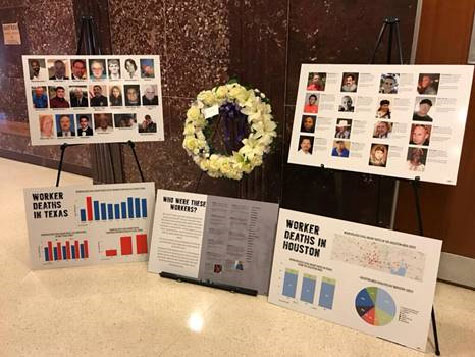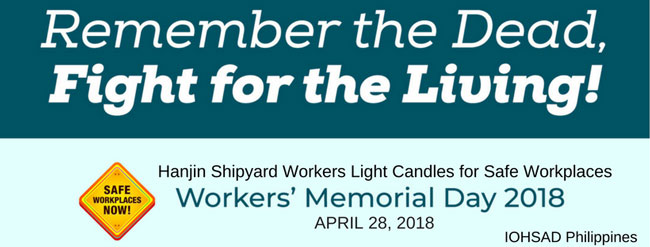 The AFL-CIO has released the annual (2018) Death on the Job report was released . https://aflcio.org/dotj The press release is below.
The AFL-CIO has released the annual (2018) Death on the Job report was released . https://aflcio.org/dotj The press release is below.
A social media kit with infographics to accompany the report can be accessed here.
FOR IMMEDIATE RELEASE
Contact: Carolyn Bobb, 202-637-5018 or cbobb@aflcio.org
“A National Crisis”: New AFL-CIO Report Reveals 150 Daily U.S. Worker Deaths in 2016
View Report here: https://aflcio.org/dotj
(Washington, D.C., April 26, 2018) – According to a report released today by the AFL-CIO, 5,190 American workers died on the job in 2016, an increase from 4,836 deaths the previous year. Another estimated 50,000 to 60,000 died from occupational diseases, meaning approximately 150 workers died on the job each day from preventable, hazardous workplace conditions. Overall, the national job fatality rate increased to 3.6 per 100,000 workers from 3.4 in 2015.
“We deserve to walk out the front door in the morning knowing we’ll return home safe and healthy after a full day’s work,” said AFL-CIO President Richard Trumka (UMWA). “It’s a travesty that working people continue to lose their lives to corporate greed. The selfish and reckless decisions being made in boardrooms and in Washington are killing the very people who built this country. This is officially a national crisis, and it’s only getting worse.”
The report, titled “Death on the Job: The Toll of Neglect,” marks the 27th year the AFL-CIO has produced its findings on the state of safety and health protections for workers within the United States. The report shows the highest workplace fatality rates are in Wyoming (12.3 per 100,000 workers), Alaska (10.6), Montana (7.9), South Dakota (7.5) and North Dakota (7.0).
Startlingly, workplace violence is now the second-leading cause of workplace death, accounting for 866 workplace deaths, including 500 homicides. Yet, even as deadly violence increases in the workplace, the Trump administration has sidelined a proposed OSHA workplace violence standard.
Other report highlights show that the construction, transportation and agriculture industries remain among the most dangerous. In 2016, 991 construction workers were killed—the highest total of any sector. Agriculture, forestry, fishing and hunting was the most dangerous industry sector, with a fatality rate of 23.2 per 100,000 workers.
Despite these alarming findings, OSHA continues to face a desperate dearth of resources. Responsible for regulating 9 million workplaces, the agency’s 764 federal inspectors would need 158 years to visit each site just once. Yet, the administration has continued to enact an aggressive deregulatory agenda, gutting safety rules and proposing deep cuts to worker safety and health training.
In one case, the administration is considering rolling back MSHA’s coal dust rule, even as NIOSH is warning of the largest cluster of black lung in coal miners seen in years. More than 400 cases of advanced progressive massive fibrosis (PMF) were reported from just three Appalachian clinics from 2013 to 2017.















